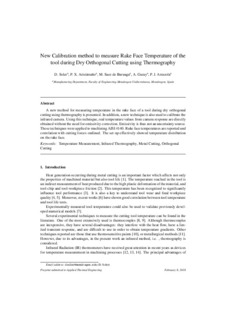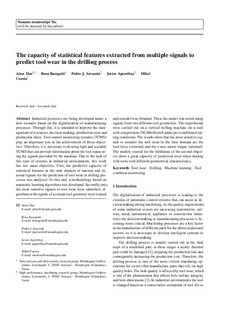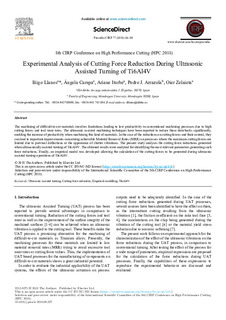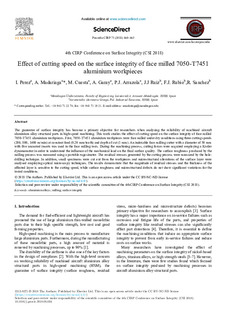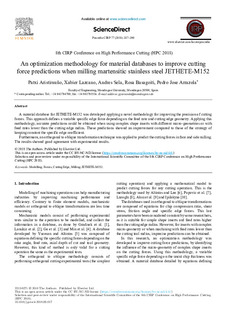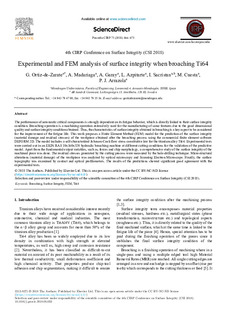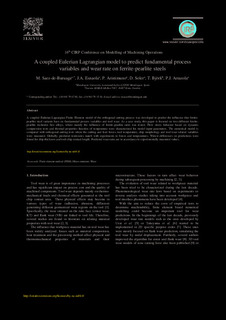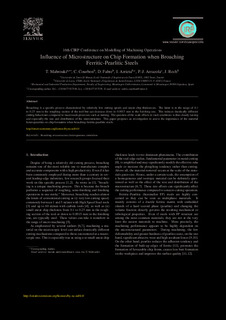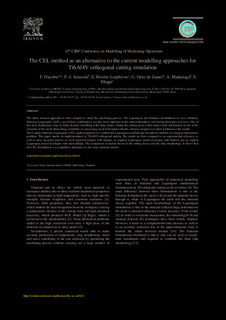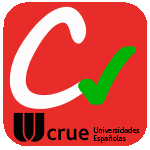Bilatu
39-tik 1-10 emaitza erakusten
New Calibration method to measure Rake Face Temperature of the tool during Dry Orthogonal Cutting using Thermography
(Elsevier Ltd., 2018)
A new method for measuring temperature in the rake face of a tool during dry orthogonal cutting using ther-
mography is presented. In addition, a new technique is also used to calibrate the infrared camera. Using ...
The capacity of statistical features extracted from multiple signals to predict tool wear in the drilling process
(Springer Verlag, 2019)
Industrial processes are being developed under a new scenario based on the digitalisation of manufacturing processes.Through this, it is intended to improve the management of resources, decision-making, ...
Drilling test data from new and worn bits
(2019)
This directory contains the raw data acquired by Mondragon Unibertsitatea during the execution of drilling tests. These data were used to obtain the results presented in the article "The capacity of statistical features ...
Experimental analysis of cutting force reduction during ultrasonic assisted turning of Ti6Al4V
(Elsevier Ltd., 2019)
The machining of difficult-to-cut materials involves limitations leading to low productivity in conventional machining processes due to high cutting forces and tool wear rates. The ultrasonic ...
Effect of cutting speed on the surface integrity of face milled 7050-T7451 aluminium workpieces
(Elsevier Ltd., 2018)
The guarantee of surface integrity has become a primary objective for researchers when analysing the reliability of machined aircraft aluminium alloy structural parts in high-speed machining. This work studies the effect ...
An optimization methodology for material databases to improve cutting force predictions when milling martensitic stainless steel JETHETE-M152
(Elsevier Ltd., 2018)
A material database for JETHETE-M152 was developed applying a novel methodology for improving the precision of cutting forces. This approach defines a variable specific edge force depending on the feed rate and cutting ...
Experimental and FEM analysis of surface integrity when broaching Ti64
(Elsevier, 2018)
The performance of aeronautic critical components is strongly dependent on its fatigue behavior, which is directly linked to their surface integrity condition. Broaching operation is a machining operation extensively used ...
A Coupled Eulerian Lagrangian Model to Predict Fundamental Process Variables and Wear Rate on Ferrite-pearlite Steels
(Elsevier B.V., 2017)
A coupled Eulerian-Lagrangian Finite Element model of the orthogonal cutting process was developed to predict the influence that ferritepearlite steel variants have on fundamental process variables and tool wear. As a case ...
Influence of Microstructure on Chip Formation when Broaching Ferritic-Pearlitic Steels
(Elsevier B.V., 2017)
Broaching is a specific process characterized by relatively low cutting speeds and uncut chip thicknesses. The latter is in the range of 0.1 to 0.25 mm in the roughing section of the tool but can decrease down to 0.0015 ...
The CEL Method as an Alternative to the Current Modelling Approaches for Ti6Al4V Orthogonal Cutting Simulation
(Elsevier B.V., 2017)
The finite element approach is often adopted to study the machining process. The Lagrangian and Eulerian formulations or even Arbitrary Eulerian-Lagrangian (ALE), one of their combinations, are the most employed in the ...


